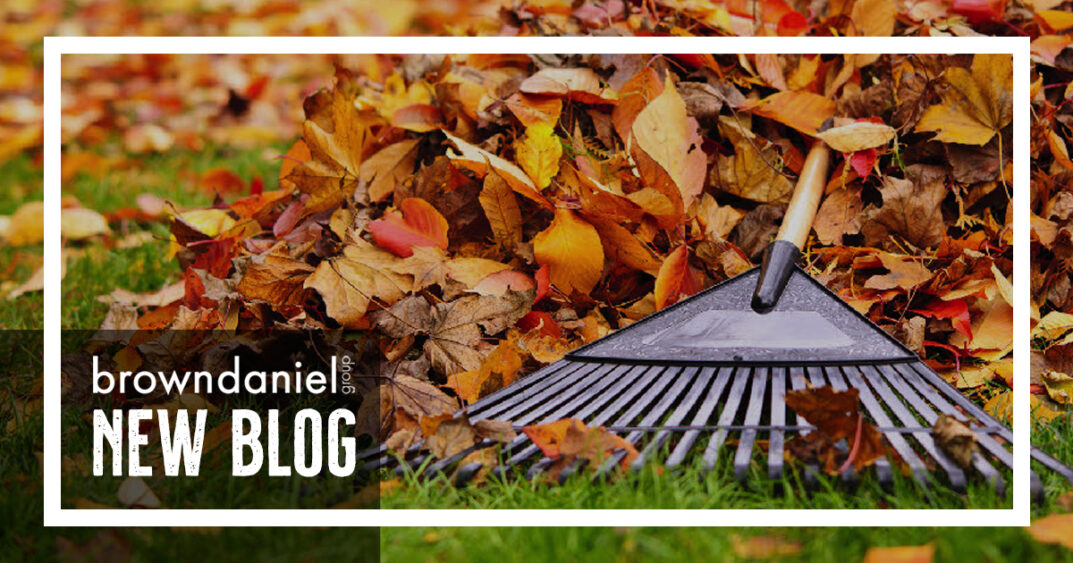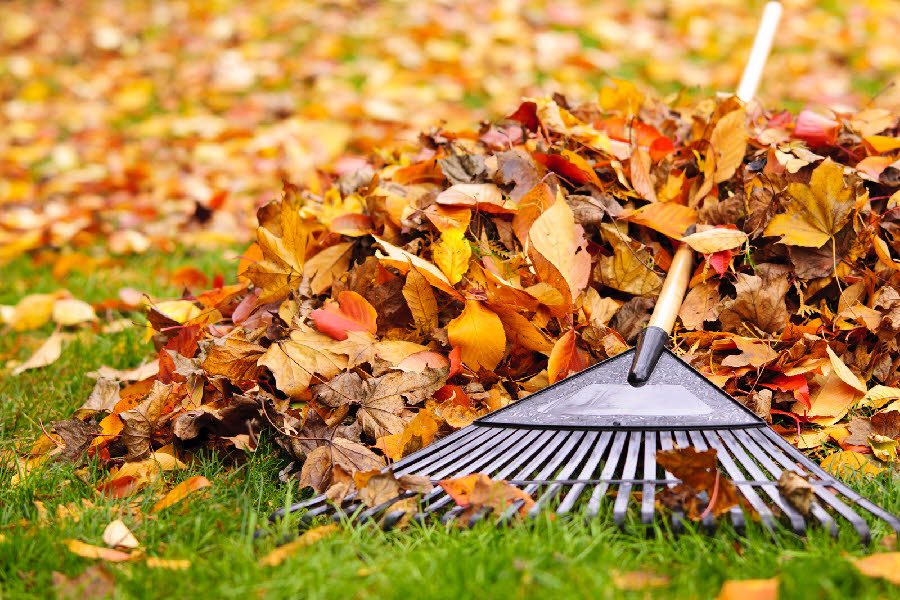
To quote a meme travelling around the city lately, Atlanta’s weather just went from 90 to 55 like it saw a state trooper! Most of us are thrilled to have temperatures that finally make it feel like fall, and even the windy and rainy days are a welcome reprieve from the steamy summer that overstayed its welcome. But of course, as the temperatures drop and the winds pick up, many of us are losing sight of our lawns underneath a fresh layer of fallen leaves. Before you grab your rake or call your lawn service, are you sure you want to get rid of all of that colorful ground cover? Experts actually disagree about the best way to maintain your autumn yard. Most of us are use to tidying up in the fall and getting rid of the leaves, but according to some lawn experts, that may not be the best idea for your lawn. Some people are actually big proponents of allowing at least some of those vibrantly colored leaves to sit on your lawn all winter. And of course, other lawn care specialists will tell you to rake them up and rid yourself of them posthaste. So what is the right answer? We will help you by looking at some of the differing reasons for and against raking your leaves.
Autumn Leaves as Natural Fertilizer?

Many people grew up believing that raking leaves is a must for a healthy lawn, and that a blanket of leaves would kill the grass beneath by robbing it of sunlight and interrupting water absorption. As it turns out, this is only true where thick piles of leaves form. A thin layer of leaves can actually act as natural fertilizer, adding nutrients to your lawn’s soil that you would otherwise pay for in the form of chemicals that you add back to your grass after raking and removing the leaves. In fact, if you leave your leaves be, you may be able to avoid fall fertilizing altogether, as the nitrogen from the leaves should be enough to feed your grass for the winter. The leaves from one large tree alone can be worth as much as $50 worth of plant food and pound for pound, leaves contain twice the mineral content of manure.
On the flip side, one argument against leaving your lawn under a winter blanket of wet, moldy leaves is that it’s just not good for certain varieties of grass. Grasses that are famous for maintaining their green hue throughout winter like bluegrass or fescue, need to continue to receive the same amount of sun and fresh air, something that won’t be possible beneath a pile of leaves. That sun blocking layer of leaves also subjects your yard to constant moisture which provides the perfect environment for a host of diseases, so again, the layer must be thin even for other grass types.
Insects Good and Bad
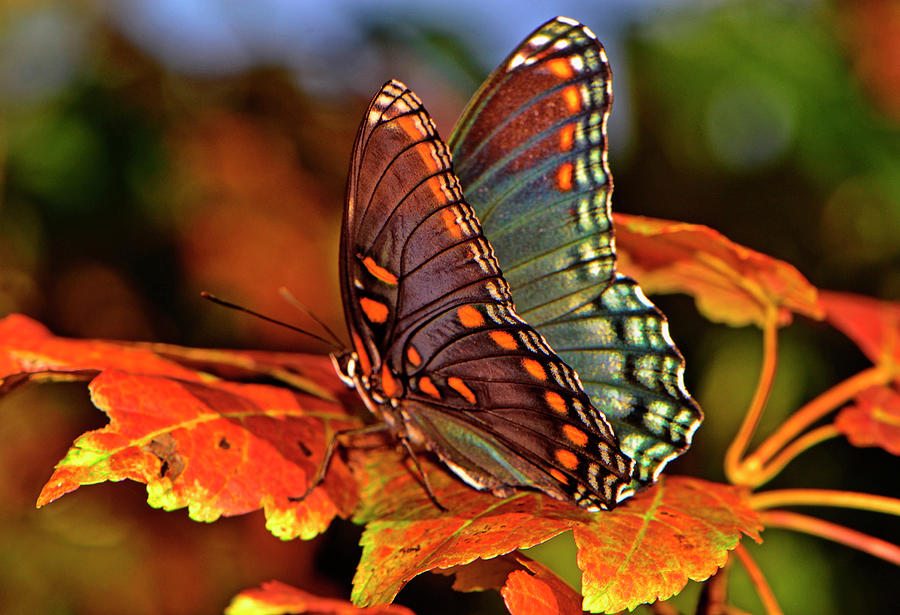
Some gardening experts extol the virtues of a leaf laden lawn, because beneficial insects such as butterflies and honeybees often spend the winter in leaf litter, and removing the leaves from your yard robs them of an environment where they can thrive until spring. However, it’s only logical to assume that if beneficial insects are thriving beneath your yard’s leaf cover, other harmful insects are spending the winter there as well. Bugs such as stink bugs, squash borers, cockroaches, cucumber beetles, bean beetles, boxelder bugs, tomato hornworms, and cabbage worms will also take advantage of the food and shelter the leaves provide, growing strength with which to attack your flower and vegetable gardens in the coming spring and summer months.
Appearances Matter
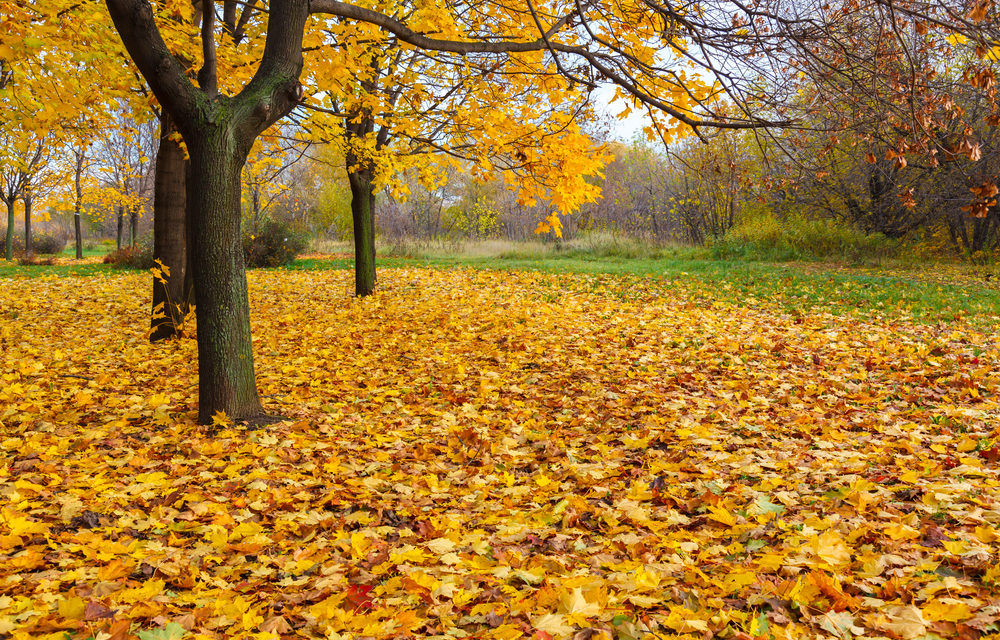
Even if your main concern is the health of your grass and future planting season, the appearance of your lawn is still an important factor to consider. Yards smothered by a coating of damp, brown leaves tend to make your property look trashy and unkempt, like no one is staying on top of basic maintenance and upkeep. This is even more of an important aspect of the discussion to consider if you will be putting your house on the market this fall.
Do not be fooled into thinking the current hot housing market will mean your house will automatically sell easily no matter what state your yard is in. Here and there you will still find sellers having a slower experience with their home sale, with less interest in their home than they expected. Something as simple as a messy yard could be to blame.
Mulch Don’t Remove to Maximize Benefits
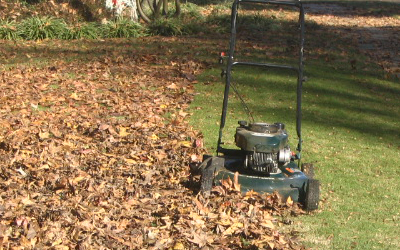
It’s possible that the best solution to your fall leaf woes lies somewhere in the middle of the discussion. Don’t let the leaves pile up and starve your lawn of precious sunshine and oxygen, but don’t waste this beneficial fertilizing option either. Many experts recommend that instead of raking and removing your leaves, or allowing them to rest indefinitely, that you mulch them instead. Blow or rake any leaves that have gathered into heaping mounds into a thinner layer, then attack them all with your lawn mower. While there are mulching mowers on the market that are specifically designed to do this job, you don’t need to purchase one for the task. It may take a few passes over the same area to shred all the leaves, but you will be able to do the job with your usual equipment. Set your mower height to about two inches, and make sure that you wait until leaves are completely dry before you start mowing. The leaf bits that your mower leaves behind will decompose into organic matter, enriching your soil without harming your grass.
If you do have a mulching mower, you have the advantage of being able to transfer some of the mulched leaves to other locations that also need the rich nutrients they contain. When your mower’s bagging attachment has filled up with excess leaves, transfer them to your garden beds or to your compost bin if you have one. These leaves look great as a substitute for store bought mulch, and they make a great meal for the earthworms that signal healthy rich soil.
Mulching doesn’t just benefit your yard by preserving all of the nitrogen rich leaf litter for your soil, but it also solves the problem of what to do with all of the leaves, since many of the other options are a bit problematic. Bagging your leaves for the trash service just serves to send more waste to the local landfill, with the added material used in bagging. Some people opt to burn their leaves, but this can be dangerous, especially on windy fall days.
What is Leaf Mold, and How do You Make It?

Making leaf mold is another way you can recycle the rich nutrients of the leaves back into your lawn or garden. The average tree stores up to 80 percent of its nutrients and minerals in leaves, so this is a precious resource that it would be a shame to waste. What is leaf mold though? Leaf mold is a type of spongy soil consisting of all organic matter. It’s the aspect of a forest floor that makes it feel spongy when you walk on it, and for good reason – leaf mold acts like a sponge, holding 300 to 500 percent of its own weight in water. Leaf mold is a favorite of gardeners in England, but it is also becoming more popular among lawn care experts in the United States.
To make leaf mold, you can follow the same techniques as for mulching the leaves, using either a mower with a bagging attachment or raking up the chopped up leaves when you are finished. Alternatively, you can simply rake your leaves into one giant pile in an out of the way corner of your yard, and allow them to stay that way. If you are working with mulched leaves, you will need to stuff them into a bin or bag, packing them down as you fill your container.
Once your leaf pile or container of leaves is complete, wet them to promote the growth of fungi. Seal your container if you are using one, and poke holes in the sides to promote airflow. After one to three years, the leaves will have disintegrated into a dark, sweet-smelling, soil conditioner that is high in calcium and magnesium and retains water. Leaf mold is exceptional as an additive for vegetable and flower gardens, and a great addition to potting soils.
Community Recycling
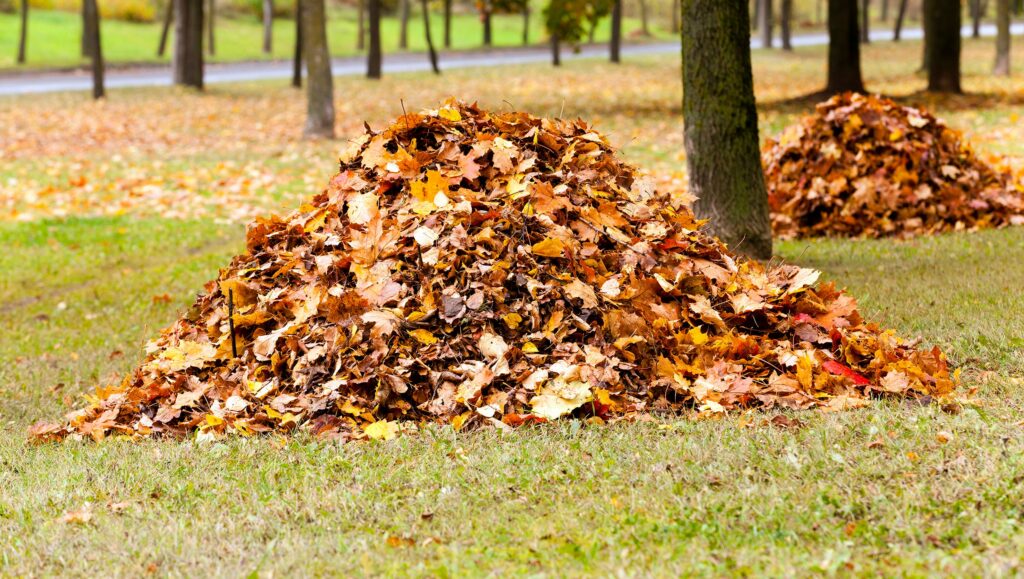
If you do not have many trees in your own yard that produce significant leaves, you may still be able to benefit from the nutrients that these leaves provide. Many communities offer redistribution events where neighbors with excess leaves can bring their leaves to be mulched and given out to others in their neighborhood who want them. Check out your local municipality’s website throughout the fall to watch for events like this near you. Whether you have more leaves than you can handle, or long for what you don’t have, these events where neighbors share with neighbors work out well for everyone.

